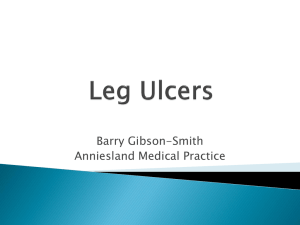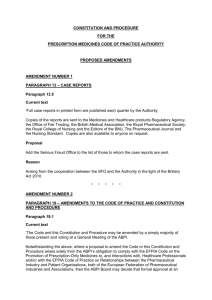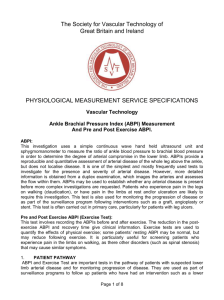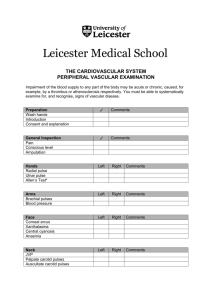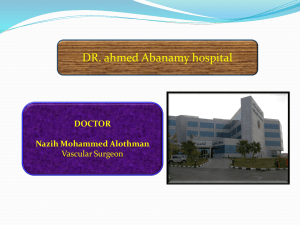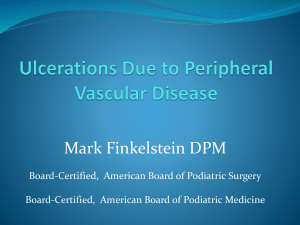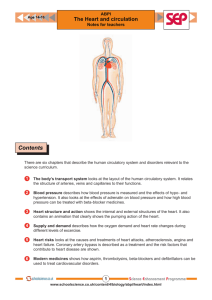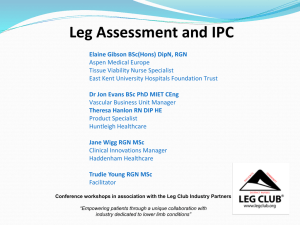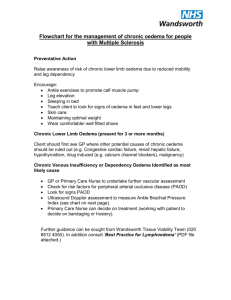including ABPI ultrasound locations on the
advertisement
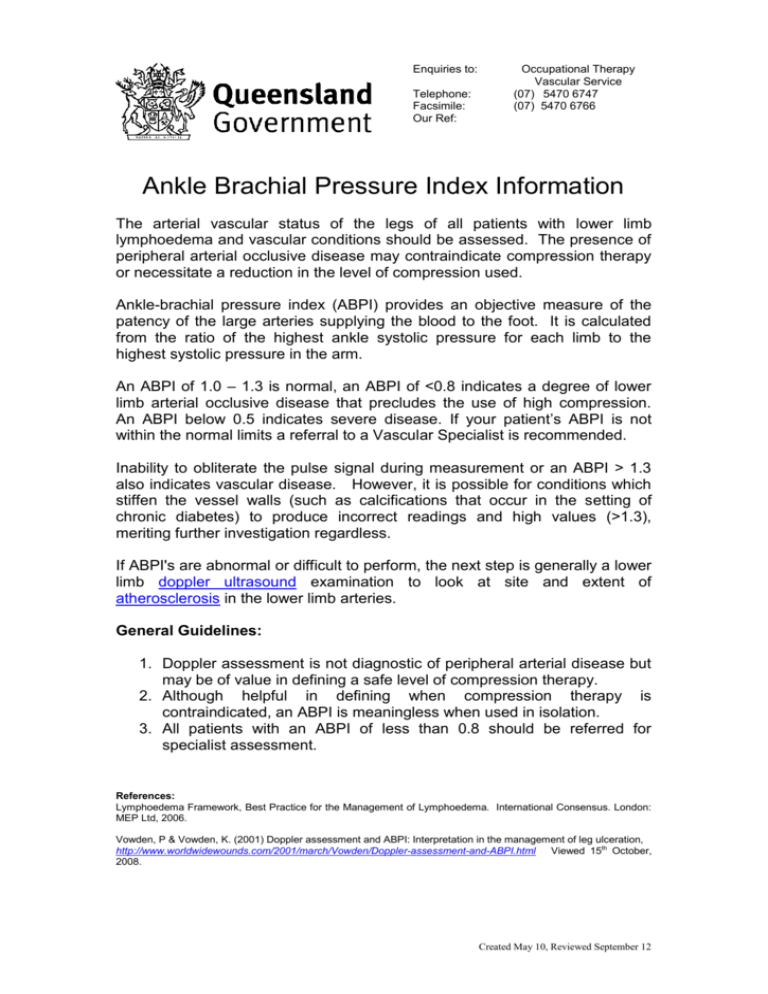
Enquiries to: Telephone: Facsimile: Our Ref: Occupational Therapy Vascular Service (07) 5470 6747 (07) 5470 6766 Ankle Brachial Pressure Index Information The arterial vascular status of the legs of all patients with lower limb lymphoedema and vascular conditions should be assessed. The presence of peripheral arterial occlusive disease may contraindicate compression therapy or necessitate a reduction in the level of compression used. Ankle-brachial pressure index (ABPI) provides an objective measure of the patency of the large arteries supplying the blood to the foot. It is calculated from the ratio of the highest ankle systolic pressure for each limb to the highest systolic pressure in the arm. An ABPI of 1.0 – 1.3 is normal, an ABPI of <0.8 indicates a degree of lower limb arterial occlusive disease that precludes the use of high compression. An ABPI below 0.5 indicates severe disease. If your patient’s ABPI is not within the normal limits a referral to a Vascular Specialist is recommended. Inability to obliterate the pulse signal during measurement or an ABPI > 1.3 also indicates vascular disease. However, it is possible for conditions which stiffen the vessel walls (such as calcifications that occur in the setting of chronic diabetes) to produce incorrect readings and high values (>1.3), meriting further investigation regardless. If ABPI's are abnormal or difficult to perform, the next step is generally a lower limb doppler ultrasound examination to look at site and extent of atherosclerosis in the lower limb arteries. General Guidelines: 1. Doppler assessment is not diagnostic of peripheral arterial disease but may be of value in defining a safe level of compression therapy. 2. Although helpful in defining when compression therapy is contraindicated, an ABPI is meaningless when used in isolation. 3. All patients with an ABPI of less than 0.8 should be referred for specialist assessment. References: Lymphoedema Framework, Best Practice for the Management of Lymphoedema. International Consensus. London: MEP Ltd, 2006. Vowden, P & Vowden, K. (2001) Doppler assessment and ABPI: Interpretation in the management of leg ulceration, http://www.worldwidewounds.com/2001/march/Vowden/Doppler-assessment-and-ABPI.html Viewed 15th October, 2008. Created May 10, Reviewed September 12 Enquiries to: Telephone: Facsimile: Our Ref: Occupational Therapy Vascular Service (07) 5470 6747 (07) 5470 6766 Where to get an ABPI or Arterial Ultrasound performed on the Sunshine Coast Queensland Diagnostic Imaging Buderim: 07) 5444 5877 Noosa: 07) 5430 5200 o At Noosa, patients with Medicare cards are bulk billed for all services. o At Buderim, arterial ultrasounds cost approximately $300 of which $140 can be recovered. Pension card or health care card holders are bulk billed. Sunshine Vascular Imaging Buderim: 07) 5453 4300 Dr Schultz also runs Clinics at Caloundra on Wednesdays and Fridays o All Patients are bulkbilled for arterial ultrasounds and ABPIs. o If two legs need assessment, it is performed on separate days. X-ray and Imaging Caloundra: 07) 54382088 Coolum Beach: 07) 54461599 o All patients with a medicare card are bulk billed for arterial ultrasounds and ABPIs. Sunshine Coast Radiology Maroochydore (main booking centre): 07) 54793911 Selangor Private Hospital Nambour: 07) 54415888 Nambour Howard Street: 07) 54411599 Warana: 07) 59933100 Buderim: 07) 54562400 o All Centres bulk bill patients with a medicare card for arterial ultrasounds and ABPIs. The above prices are only a guide and are subject to change. It is advisable to contact the clinic directly for an exact quote. Created May 10, Reviewed September 12
